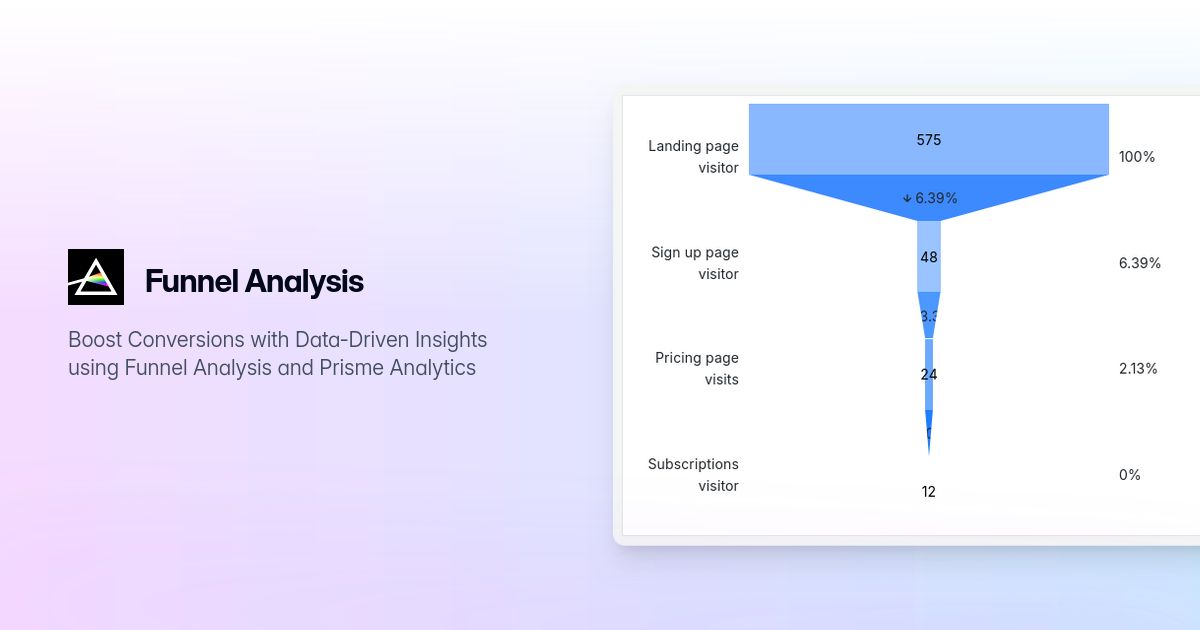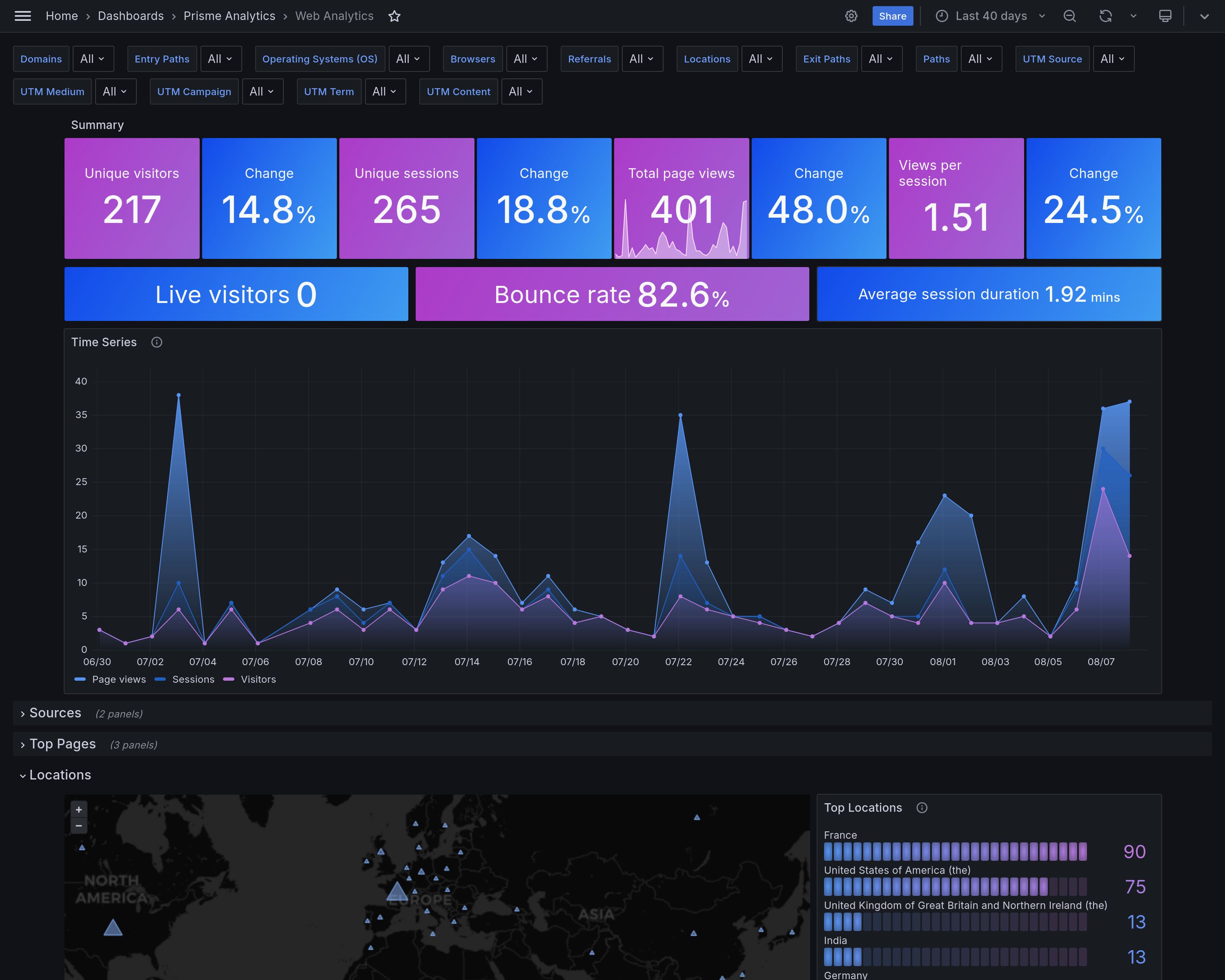
Funnel Analysis in Web Analytics: Boost Conversions with Data-Driven Insights
Published on 8/26/2024
In the world of digital marketing and e-commerce, understanding user behavior is crucial for success. One of the most powerful tools in a web analyst's arsenal is funnel analysis. This technique allows businesses to visualize and analyze the steps users take towards a desired goal, whether it's making a purchase, signing up for a newsletter, or completing any other conversion action.
Funnel analysis gets its name from the shape of the visualization it typically produces – wide at the top where many users enter, and narrowing towards the bottom as users drop off at each step. By examining this funnel, businesses can identify where they're losing potential customers and take action to improve their conversion rates.
The Importance of Funnel Analysis in Web Analytics
Funnel analysis is more than just a neat visualization – it's a critical tool for improving your website's performance and your bottom line. Here's why it's so important:
- Identifying Drop-off Points: Funnel analysis clearly shows where users are leaving your conversion process. This insight is invaluable for pinpointing problematic areas of your website or app.
- Quantifying Lost Opportunities: By seeing how many users drop off at each stage, you can calculate the potential revenue lost and prioritize improvements accordingly.
- Benchmarking Performance: Funnels provide a clear metric for measuring the effectiveness of your conversion process over time. As you make changes, you can easily see if they're having the desired effect.
- Segmentation Insights: By applying funnel analysis to different user segments, you can gain insights into how different types of users interact with your site.
- Optimizing Marketing Spend: Understanding your funnel can help you focus your marketing efforts on the stages where they'll have the most impact, improving your return on investment.
Key Components of a Funnel
A typical conversion funnel consists of several stages, each representing a step that users need to take to reach the final goal. While the exact stages can vary depending on your business model and goals, a common e-commerce funnel might look like this:
- Awareness: Users visit your website
- Interest: Users browse products or content
- Consideration: Users add items to their cart
- Intent: Users begin the checkout process
- Action: Users complete the purchase
Each of these stages represents a potential point where users might drop off. By analyzing the funnel, you can see which stages are performing well and which need improvement.
Steps to Perform Funnel Analysis
Performing effective funnel analysis begins with clearly defining your goal – the end action you want users to take. Once you've identified this, map out the necessary steps users must take to reach your goal. These will form the stages of your funnel.
Next, use web analytics tools such as Prisme to gather data on user behavior at each stage of the funnel. With this data, create a visual representation of your funnel, showing the number of users at each stage and the drop-off rates between stages.
Analyze the funnel to identify stages with the highest drop-off rates. These are your primary areas for improvement. For these problematic stages, dig deeper to understand why users are leaving. This might involve user testing, surveys, or more detailed analytics.
Based on your findings, implement changes to improve the user experience at problematic stages. Remember, funnel optimization is an ongoing process. Continuously monitor your funnel performance and iterate on your improvements to achieve the best results.
Common Challenges in Funnel Analysis
While funnel analysis is a powerful tool, it comes with its own set of challenges. One major issue is tracking multi-device journeys, as users often switch between devices during their conversion process. Similarly, not all users follow a linear path through your funnel. Some may skip steps or move back and forth between stages, complicating the analysis.
Time considerations also play a role, especially for conversion processes that happen over extended periods. Ensuring the accuracy and completeness of your data is crucial for meaningful funnel analysis. Lastly, different user segments may behave differently in your funnel, adding another layer of complexity to the analysis.
Best Practices for Optimizing Your Funnel
To get the most out of your funnel analysis, focus on key metrics that are most relevant to your business goals. Use cohort analysis to understand how different groups of users move through your funnel over time. A/B testing can be invaluable for validating hypotheses about why users are dropping off at certain stages.
Personalization is another powerful tool. Use insights from your funnel analysis to tailor the user experience at each stage. Involve teams from across your organization in analyzing and optimizing the funnel – perspectives from marketing, design, and development can all contribute to a more effective funnel.
Remember to look beyond just the conversion funnel to understand the entire customer lifecycle. Make funnel analysis a regular part of your analytics routine, not just a one-off exercise. Continuous monitoring and optimization are key to long-term success.
Tools for Funnel Analysis
While funnel analysis can be performed manually, several tools can streamline the process and provide deeper insights. Google Analytics remains a popular choice for many businesses due to its robust feature set and integration with other Google services. It offers funnel visualization reports that allow you to track user progression through predefined goal funnels.
For more advanced analysis, tools like Prisme, Mixpanel and Amplitude provide powerful funnel analysis features. These platforms allow for more flexible funnel creation and offer advanced segmentation options. They're particularly useful for businesses with complex user journeys or those looking to perform in-depth cohort analysis.
E-commerce-specific platforms such as Shopify Analytics and Adobe Analytics (formerly Omniture) offer funnel analysis tools tailored to online retail. These often include pre-built funnels for common e-commerce journeys, making it easier for retailers to get started with funnel analysis.
For businesses looking to combine quantitative funnel data with qualitative insights, tools like Prisme and Hotjar can be invaluable. This can provide context to your quantitative data and help you understand why users might be dropping off at certain points.
Regardless of the tool you choose, the key is to select one that integrates well with your existing systems and provides the level of detail you need for your analysis. Remember, the most sophisticated tool is only as good as the strategy behind its use.
Conclusion
Funnel analysis is a cornerstone of effective web analytics, providing invaluable insights into user behavior and the effectiveness of your conversion process. By understanding where users drop off in their journey towards conversion, you can make data-driven decisions to improve your website or app's performance.
However, it's important to remember that funnel analysis is not a one-time task. The digital landscape is constantly evolving, as are user behaviors and expectations. Regular funnel analysis should be part of your ongoing optimization efforts, allowing you to continually refine your user experience and improve your conversion rates.
Moreover, while funnel analysis is powerful, it's most effective when combined with other analytics techniques. Use it alongside A/B testing, user surveys, and qualitative research methods to get a comprehensive understanding of your users' needs and behaviors.
In the end, the goal of funnel analysis isn't just to improve a set of metrics – it's to create a smoother, more intuitive experience for your users. By doing so, you not only improve your conversion rates but also build stronger, longer-lasting relationships with your customers. In the competitive world of digital business, that can make all the difference.
